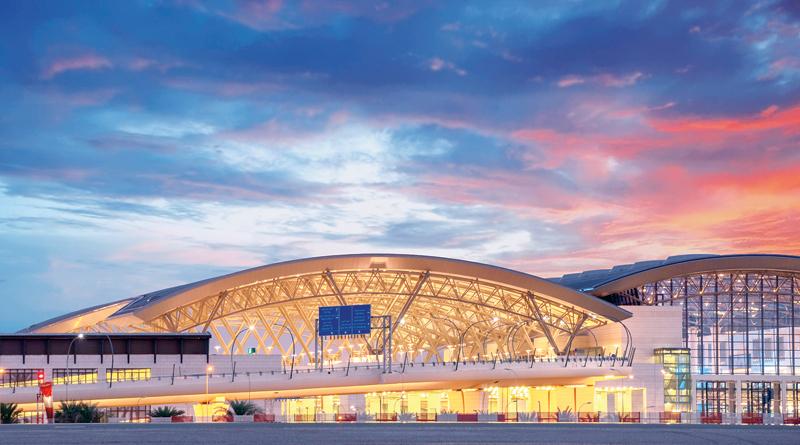

The contribution of Oman’s aviation industry, as an enabler of the nation’s pivotal tourism and logistics sectors, is projected to surge in value terms to RO 1.4 billion by the year 2040, up from RO 170 million in 2016, according to the head of Oman Airports.

Shaikh Aimen al Hosni (pictured), CEO, said the company — part of Oman Aviation Group — continues to leverage investments made by the Omani government in the development of modern airports and other associated infrastructure to add value to the national economy.
Apart from the accent on efforts to drive tourist inflows, Oman Airports is focused on the development of Airport Cities, Airport Free Zones, Airfreight Services, Premium Airport Services, and Cargo Handling distributed across three key pillars: Tourism, Aviation, and Logistics, he said.
Al Hosni made the comments in a presentation on the ‘Role of Airports in Driving Inbound Tourism’, which he delivered during a seminar hosted by the Modern College of Business and Science at the Muscat InterContinental Hotel yesterday.
Oman Airports currently oversees a portfolio of seven airports in the Sultanate, comprising the international airports in Muscat and Salalah, regional airports in Suhar and Duqm, and the three airports of Petroleum Development Oman (PDO) in Marmul, Qarn Alam and Fahud.
These seven airports handled a total of 17.2 million passengers last year, up from 6.2 million in 2010, representing a three-fold jump over the period. The tally is projected to cross 18 million passengers in 2018, he said. Muscat International Airport, a landmark in its own right, will be expanded in a further three phases to reach an optimum capacity of 100 million passengers in the future, he said.
As an important enabler of the tourism and logistics sectors, Oman Airport is also looking to attract new airlines to the Sultanate, said Al Hosni. Besides national carrier Oman Air, as many as 35 carriers from around the world currently fly through airports in the Sultanate, with the number growing incrementally at the rate of 2-3 airlines annually.
The goal now is to attract airlines from Asia, Africa and parts of Europe to ensure adequate connectivity with promising tourism markets, he said.
Oman’s strategic location in the Middle East, according to the CEO, effectively brings within its reach 34 per cent of the world’s population within a four-hour flying time, rising to 86 per cent within eight hours.
By capitalising on this potential, the Sultanate can serve as a hub for aviation, he noted.
Oman Observer is now on the WhatsApp channel. Click here



